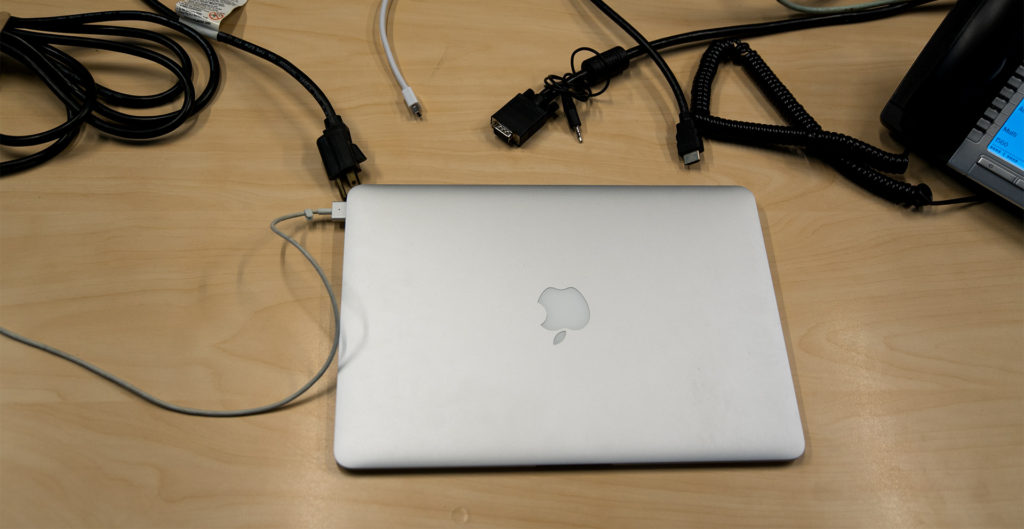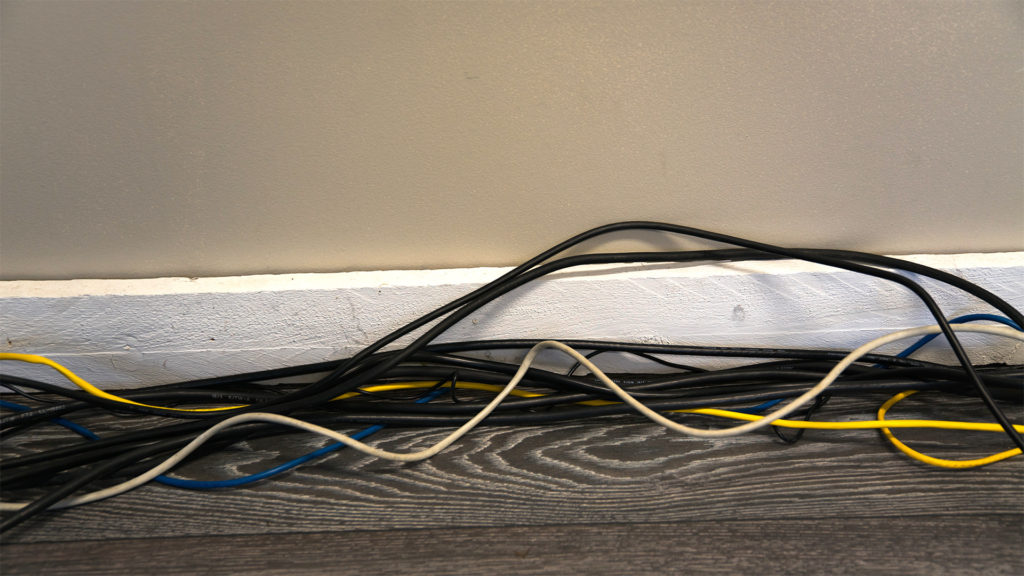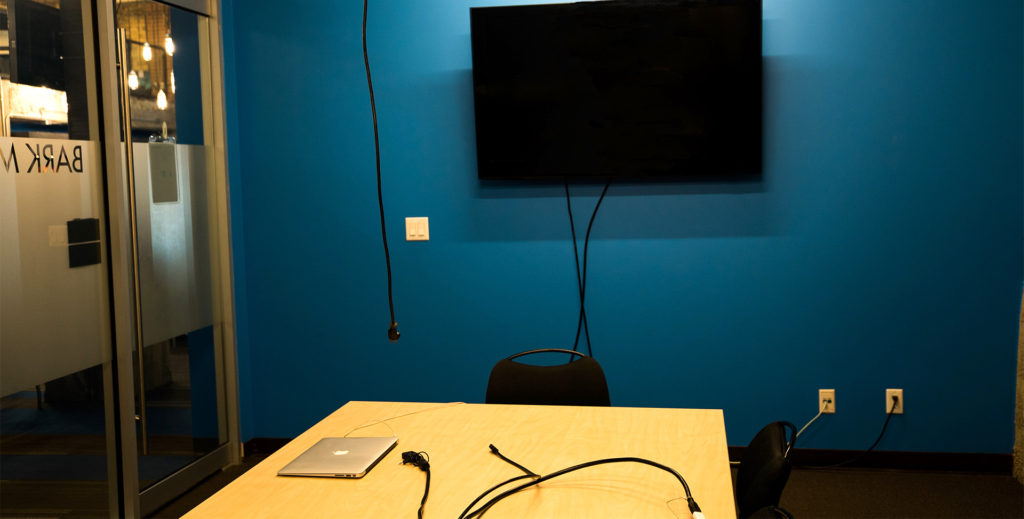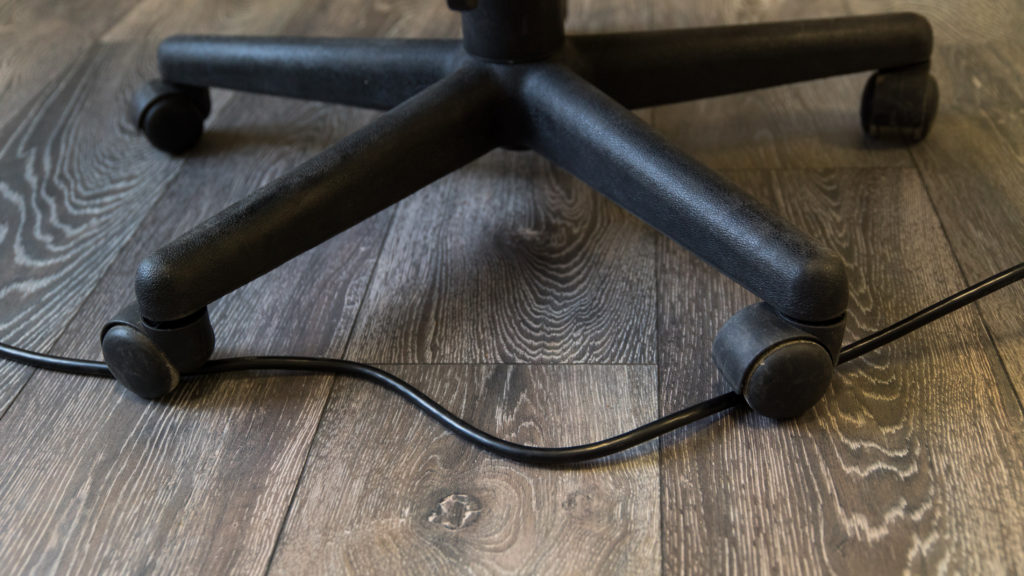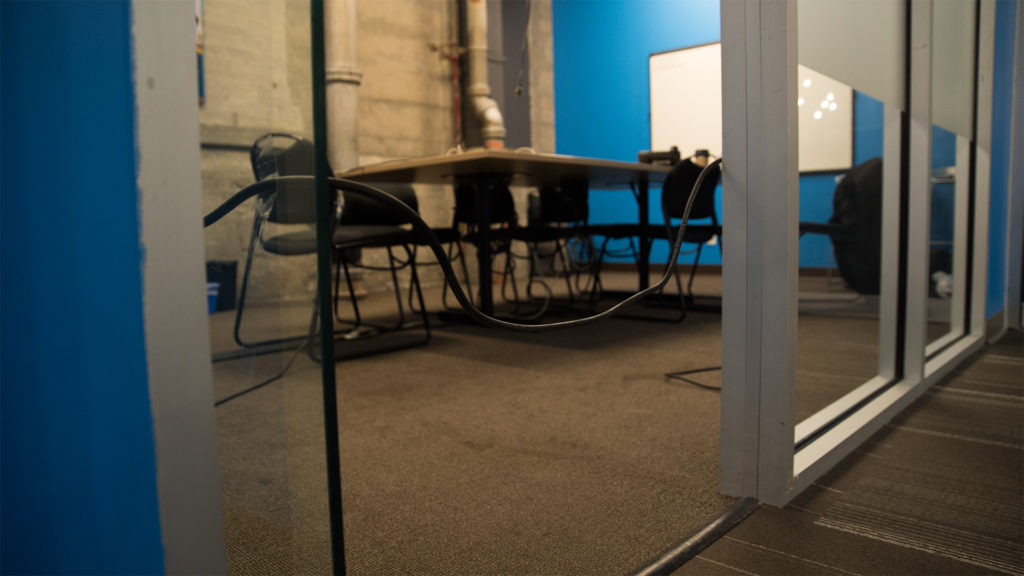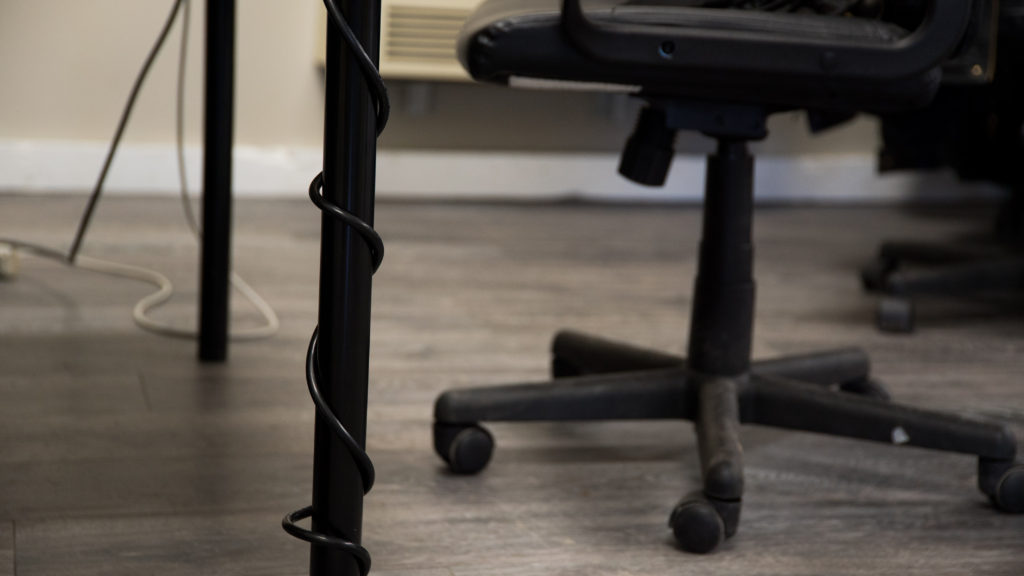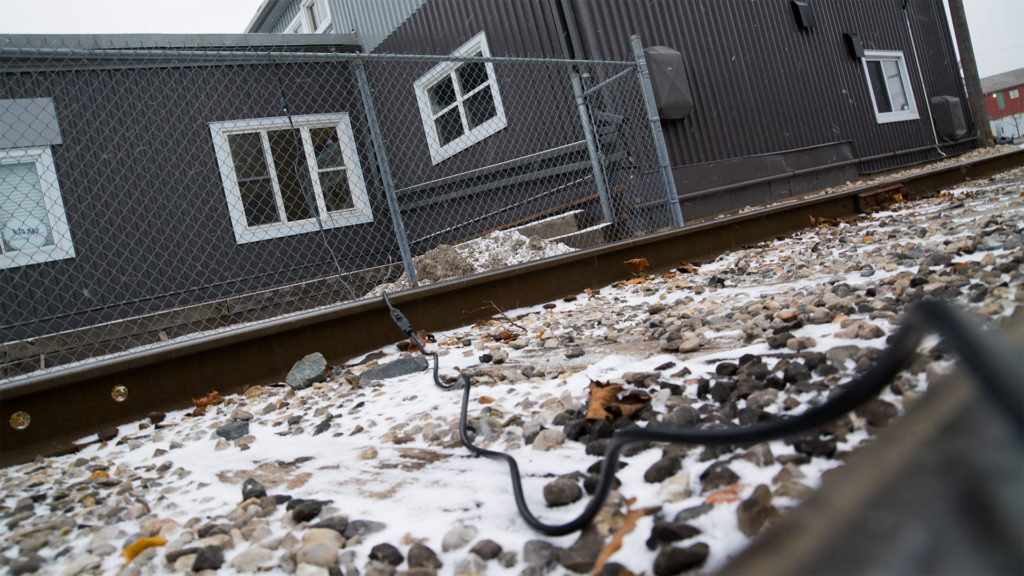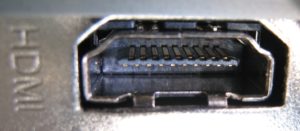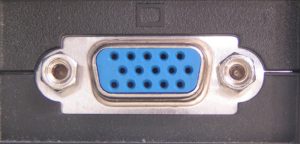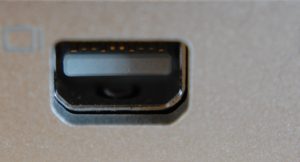I
First call of the day:
“We need an HDMI
To VGA stat.”
II
Ticket items: 10.
Number of tickets dealing
With cable woes: 10.
III
“Can’t display Prezi?
No prob. Just call up IT.
That’s what they’re there for.”
IV
9:30AM.
“Sorry to trouble you but
My Mac won’t connect.”
V
I put the cable
In the HDMI port.
Why doesn’t it work?
VI
1 room, 10 laptops.
Will 12 cords and adapters
Be enough? Hope so.
VII
“Hmm, it seems I left
My adapter back at home.
Let’s call up IT.”
VIII
This conference room is
Populated with cables,
But not people. Sigh.
IX
HDMI? Check.
VGA? Check. USB?
Check. Thunderbolt? Woops.
X
“IT here. I have
That adapter you asked for.”
“Thanks. What took so long?”
XI
My laptop: MacAir.
My output: HDMI.
TV: VGA?
XII
That’s the third cable
To go missing this morning.
Thieves walk amongst us.
XIII
Mini DisplayPort.
Damn, this laptop only has
Mini DisplayPort.
XIV
Why did I get a
Master’s in CS when all
I do is lug cords?
XV
Like Sisyphus, I
Carry wires room to room for
All eternity.
XVI
A VGA cord
Stuck in a USB slot.
No wonder Trump won.
XVII
We went to the moon
And yet it takes 10 minutes
To share a screen. Hmmm.
XVIII
How far is it to
The nearest Best Buy? I need
5 cables by noon.
XIX
“Hi there, Jim from sales
Can’t connect to the TV.
Can you help him out?”
XX
Who put this cable
So close to the garbage bin?
Now it’s all sticky.
XXI
Why are these cables
Going out the window and
Across the train tracks?
XXII
“Call 911 now!
Troy tripped on a VGA
Cord and broke his neck!”
XXIII
“Hello, you’ve reached the
IT department. Waiting
Time: 8 to 12 weeks.”
XIV
Don’t seem to recall
VGA delivery
In job description.
XXV
“The train company
Called. They want the cables off
The tracks right away.”
XXVI
“We need to hire a
New project manager. Troy
Is in a coma.”
XXVII
How do I send my
Prezi to the TV screen?
Better call IT.
XXVIII
Greg normally deals
With the cable set up, but
He’s on vacation.
XXIX
Tonight’s top story:
A train derailment has caused
Mass casualties.
XXX
It’s now 2PM.
Where are the cords I asked for?
They’re two hours late.
XXXI
I found these cables
On Todd’s desk after he quit.
Ugh, why do they smell?
XXXII
Let’s see what I have
In this drawer. 12 VGA
Cords, 10 USB.
XXXIII
I used to believe
That wires were worth the hassle.
Now I’m not so sure.
XXXIV
If I had a dime
For every cable mishap
I’d be Scrooge McDuck.
XXXV
“I’d like to order
1 connectivity box.”
“500 dollars.”
XXXVI
“Sorry, that was a
Typo. I actually
Need 20 boxes.”
XXXVII
“In that case, the price
Will be 10,000 dollars.”
“Do you take credit?”
XXXVIII
“Debra, can you please
Come to my office right now?”
“What’s the problem, sir?”
XXXIX
“Did you spend 10 grand
On those connectivity
Boxes? …well, did you?”
XL
“Yes, how else are our
Users supposed to screen share?”
“Debra, you’re fired.”
XLI
Another issue
With wires in Conference Room C.
When will they learn? When?
XLII
Like Prometheus
Bound to a rock, so am I
Bound by these cables.
XLIII
“I asked for five cords
And yet I only see three.”
“Best Buy was sold out.”
XLIV
Yet another day
Wasted in the conference room
Fiddling with wires.
XLV
I wish they made an
HDMI cable that
Was 90 feet long.
XLVI
2017.
Who would have guessed that we would
Still be using cords?
XLVII
Is it possible
To share screens wirelessly?
Let me check Spiceworks.
XLVIII
Let’s also see what
The good folks on /SysAdmin
Recommend I do.
XLIX
Forrest Gump would say,
“Life is like a box of cords;
Tangled and messy.”
L
Click. Just connected
My laptop to the TV
Wirelessly. So easy.
LI
I know I promised
99 haikus, but I’m
Just gonna end now.
Want to set up a wireless Conference Room?Try Now
Don't miss a Story.
Want to set up a wireless Conference Room?Try Now
To share your laptop screen with a room full of people, you basically have three options: 1) hook your laptop up to a TV or projector using an HDMI, VGA, DVI, or Thunderbolt cable and/or adapter, 2) ask everyone in the room to awkwardly huddle around you, or 3) share your screen wirelessly.
The first option has been the go-to solution since the 90s and it works fairly well, except for one thing: In today’s BYOD environment, hooking a laptop up to a TV isn’t so easy. Laptops come with so many different outputs that you’ll need to have at least a dozen different cables on standby to accommodate them all. It should go without saying that a conference room with dozens of wires strewn across it is not only an eyesore, but due to the tripping hazards associated with cables, also a palm, elbow, and face sore as well.
Some businesses attempt to deal with this problem by hiring an AV installation company to drill wires through the conference room table and put cable management boxes and connectivity boxes at each seat.
In addition to being costly and time-consuming (an AV installation can leave your conference out of commission for several days), this solution is also a little near-sighted. Who’s to say what ports end users will need in 5 years? Thunderbolt 5? USB 7? HDMI 4? Will they even have ports at all? Companies that go this route may as well make “Conference Room Table Cable Management Expert” a full-time salaried position.
This is where the Ubiq Hive enters the picture. It only takes 5 minutes to set up and costs a fraction of an AV installation. All that’s required of the IT department is to: 1) Take the Hive out of the box, 2) Hook the Hive up to the TV or projector and to the company’s LAN, 3) Hold down on the power button.
When we say that it only takes 5 minutes to set up, there’s a good chance that we’re being overly cautious. The below video explains everything you need to know in just 57 seconds.
Once the device is up and running, your end users can begin presenting. For internal users, only one action is required—going to www.goubiq.com/downloads and downloading the app. This is a fairly self-explanatory task, but we made a quick video (27 seconds long) explaining how to do it anyway.
For guest users, the process is almost identical. The only difference is that guest users go to a different url (www.goubiq.com/guest) to download the app. The below video is basically the same as the one above, except we swapped in a different title card for the section where the url is displayed. We will not be offended if you decide to skip it.
(Alternatively, both guests and internal users can just use our browser-based solution at https://present.goubiq.com/).
Once the end users have connected their devices to the Hive, the IT department can monitor the Hive remotely through the Ubiq dashboard. To do this, go to https:dashboard.goubiq.com and login with the credentials that were sent to you in an email with the subject heading “Dashboard Credentials.”
The dashboard also comes with a bunch of other features that you can play around with. The two videos below will walk you through each of these features step by step.
In addition to solving all of your screen sharing issues, the Ubiq Hive will also solve all of your digital signage issues as well. If you want to optimize your conference room displays when meetings aren’t in session by showing videos, stills, or websites, the below video will show you how it’s done.
To book a free trial of our product, please click here.
ADDITIONAL READING
Conference Room Technology: 5 Investments You Should Make
Top 10 Conference Room Cable Management Fails of 2016
Meeting Room Setup in 1 Day
Don't miss a Story.
Want to set up a wireless Conference Room?Try Now
Unlike climbing Mount Everest, which some 80-year-olds have done without difficulty, conference room cable management is not something which should be undertaken lightly. Not only does it require an enormous amount of equipment and an unlimited supply of free time, it also requires the soul of an artist, the unswerving dedication of a marathon runner, and a mind for strategy comparable to that of your average chess grandmaster.
While most people who attempt conference room cable management fail spectacularly, some fail more spectacularly than others. Here are 10 conference room cable management fails that reach the absolute apex of faildom.
1. Multiple Cables at Every Seat With No Connectivity Box
2. So Many Cables Along Baseboard that Baseboard No Longer Visible
3. Cable Dangles From Ceiling
4. Cable Gets Stuck In Wheels of Chair
5. Cable Forms Trip Wire at Door
6. Cable Too Close to Garbage Gets Garbage Juice All Over It
7. Cable Wrapped Around Leg Of Table
8. Cable Wrapped Around Leg of Chair
9. Cable Goes Out Window and Across Train Tracks
10. Cable Resting on Heater Gets BBQed
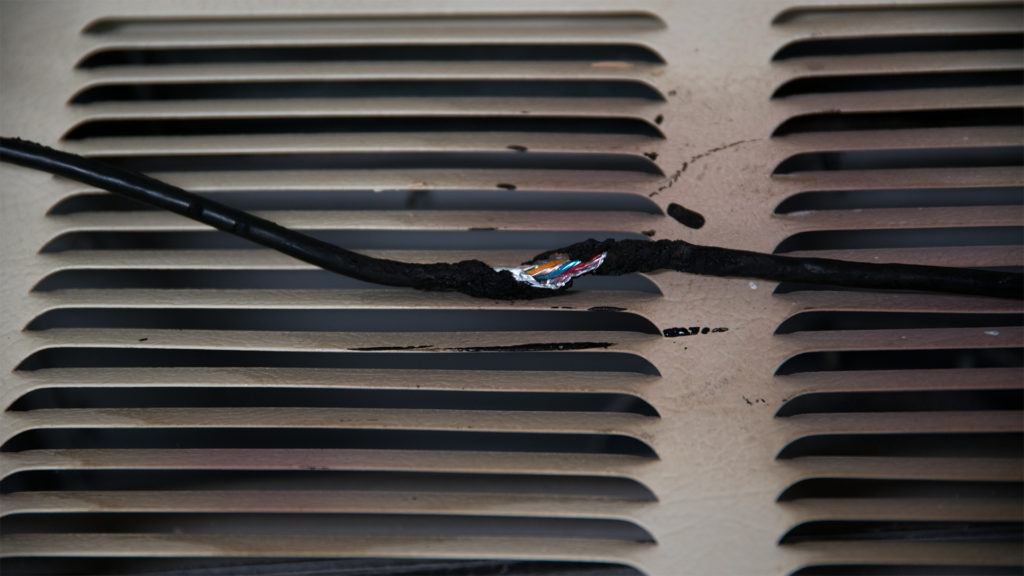
If this is what conference room cable management failure looks like, what about conference room cable management success?
Unfortunately, no photographs of a successfully cabled conference room are known to exist. Like extraterrestrial life or the Higgs boson particle pre-2012, it remains a mysterious phenomenon that no scientist can claim to fully understand.
We can, however, point you toward two devices that make cabling a conference room unnecessary. The first is a garbage bin (for throwing our your pre-existing cables), and the second is a wireless presentation solution.
One of the reasons why conference cable management is such an imposing task is that people bring their own laptops to business meetings and no two laptops come with the same video outputs. Some have HDMI outputs while others have VGA, mini DisplayPort, USB, Thunderbolt, etc. To have just one of these cables readily available at every seat of the conference table is difficult, to have all of them available is well-nigh impossible.
As it happens, all laptops come with WiFi. By allowing your end users to connect via WiFi, you not only save yourself the hassle of running hundreds of dollars worth of cables behind the baseboards, underneath the carpet, and through your connectivity boxes, you also save yourself the hassle of getting called into the conference room every hour to explain to your end users that their SD slots and HDMI outputs aren’t interchangeable.
For more information on the benefits of wireless presentations, please click here.
ADDITIONAL READING
Conference Room Technology: 5 Investments You Should Make
AV System Integrators: Are They Really Necessary?
Top 10 Conference Room Projectors of 2017
Don't miss a Story.
Want to set up a wireless Conference Room?Try Now
Of all the tricks, hacks, and shortcuts that you can use to make your conference room cables look presentable, the best and most efficient is to simply throw them in the garbage and switch to a wireless presentation system.
But failing that, the second best solution is to invest in a conference table connectivity box (or, for businesses that have multiple conference rooms with large-sized tables, dozens and dozens of conference table connectivity boxes).
Retailing for roughly the same price as a new iPad, the conference table connectivity box fits snugly into the center of your meeting room table (although you may have to drill a hole first) and provides your end users with a wide array of video inputs to choose from. If one end user has a VGA port on their laptop and another user has an HDMI port and a third user has a mini DisplayPort, there’s no need to panic: As long as you have the relevant cables on hand, they can all plug in directly to the connectivity box rather than get up and connect to the back of the conference room TV or projector.
But not all conference table connectivity boxes are the same. There are only so many ports that you can fit into a box that’s 9 inches by 7 inches and not every connectivity box will have the inputs that you require. Here are the 7 ports that you’ll need most urgently.
1. HDMI
First introduced in 2003, HDMI became the dominant video cable around 2007 and has held its grip on the market ever since. If your conference table connectivity box has just one video output, make sure it’s an HDMI.
2. VGA
Prior to HDMI’s 2007 takeover, VGA cables were the king of the land. In this day and age, buying a new laptop or projector that has a VGA port is about as challenging as buying a new, factory-sealed VHS player. Even so, there are still a surprising number of perfectly functional laptops and projectors kicking around that rely on them, and the odds that one of these devices will end up in your conference room are not insignificant. By having a VGA input in your connectivity box, you will be adequately prepared for this scenario (provided, of course, that you also have a VGA to VGA cable on hand).
3. mini DisplayPort
Apple first introduced the mini DisplayPort in 2008 and by 2013 it was a standard feature on all Apple computers. Earlier this year, however, Apple began phasing the port out.
Given the extremely large volume of devices currently in circulation that have mini DisplayPorts but no HDMI or VGA ports, it’s a good idea to make sure your conference table connectivity box is equipped with this input. It may not be till 2030 that the last laptop with a mini DisplayPort stops functioning.
4. USB
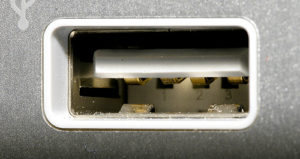
The history of USB cables is a bit like the plot of the movie Tinker Tailor Soldier Spy: You need to carefully read its Wikipedia page three times in order to understand it. But you don’t need a firm grasp of its history in order to realize why it might be needed in the conference room: It’s a universal industry standard that plugs into just about anything.
5. Ethernet

Since all laptops are capable of connecting to Wi-Fi, it’s difficult to imagine why your end users would need an Ethernet port. But after browsing through a list of all of the connectivity boxes currently on the market, it quickly becomes apparent that they all come with Ethernet ports, so there must be some sort of demand for them.
6. YPbPr component video
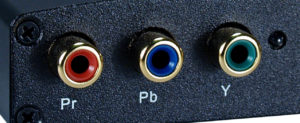
Likewise, it’s difficult to imagine why anyone would need to connect a VHS player or miniDV camcorder to a conference room TV or projector. But since the vast majority of connectivity boxes come with this input, it’s only reasonable to conclude that VHS-based business presentations are far more common than one might initially assume.
7. AC
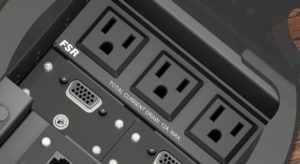
Of course, all of these inputs are useless to a laptop that isn’t powered on. True, most laptop batteries last at least 2 – 5 hours. But you already have six plugs in your connectivity box, so there’s no harm in throwing in a seventh for good measure.
Other Things To Consider
Once you’ve drilled a hole into your conference room table and installed your connectivity box, your journey toward a presentable-looking conference room is almost complete. All you have left to do is to run the seven aforementioned cables through some cable management boxes, under your carpet, and along your baseboards. For more information on how to do this, please consult our conference room cable management checklist.
Or, if this whole process sounds like too much of a hassle, you may want to look into switching over to a wireless presentation solution that allows your end users to instantly connect to the TV or projector no matter what type of video outputs their laptops have. It only takes 10 minutes for IT to install, and you don’t have to mutilate your conference room table with power tools to do it.
ADDITIONAL READING
Picking a Conference Room Name: 5 Tips to Help You Get Started
Top 10 Conference Room Projectors of 2017
Conference Room Design: 10 Examples Worth Studying
Don't miss a Story.
Want to set up a wireless Conference Room?Try Now
The average cost of an HDMI cable is $10 – $15.
At first glance, this may seem like a pretty sweet bargain. For the price of a movie ticket or a foot-long submarine sandwich, you can buy a piece of equipment that easily attaches to the back of your conference room TV and instantly solves all of your connectivity issues forever.
What’s not to like?
Well, consider the following statistics:
- Despite the prevalence of HDMI cables in enterprise conference rooms, 87% of IT managers report that problems connecting laptops to the TV is one of the top 3 issues that they are called on to deal with.
- 88% of end users complain about meeting room equipment.
- The average IT manager is called upon to resolve 8.6 meeting room technology problems per week. That’s 447.2 incidents per year.
- The average meeting room technology problem takes 23.1 minutes for an IT manager to resolve. That’s 3.31 hours per week or 22.95 days per year.
Why so many problems with cables?
In today’s BYOD environment, end users give presentations from their laptops, and not all laptops have HDMI outputs. Some have VGA, DVI, Thunderbolt, etc. This means that in addition to HDMI cables, IT managers also need to have a small arsenal of alternative video cables and adapters on hand at all times. All of those $15 cables and adapters can add up fast, and good luck making them look presentable: The art of conference room cable management is an extraordinarily difficult thing to master. (So much so that many IT teams end up hiring AV installation companies to do the job for them).
Consider some more statistics:
- In addition to the 23 days per year that IT managers waste solving cabling issues, employees waste 15.5 days a year in unproductive meetings.
- 90% of presenters prepare for technology failure (such as printing off handouts in case screen sharing doesn’t work), and 44% do a tech rehearsal beforehand
- Atlassian estimates that the salary cost of unproductive meetings for U.S. business is $37 billion.
So while the cable itself may only cost as much as a movie ticket, the true cost of cables—once salaries, wasted time, and AV installation costs are factored in—is much closer to a full-on movie production.
What about wireless conference rooms?
Unlike their cabled counterparts, wireless conference rooms don’t require constant troubleshooting, and therefore enterprises don’t hemorrhage money by deploying them. Although the initial cost of a wireless presentation system may be a bit steep compared to the $15 you’d spend on an HDMI cable, the amount saved in the long run is gargantuan. As far as ROI is concerned, wireless conference rooms are to cabled conference rooms what law degrees are to lottery tickets.
But there is a bright side to using cables: IT managers report that they walk a distance of 92.5 meters from their desk to the meeting rooms and back each time they have to go to help with a meeting room technology incident. This means they walk at least 3.2 km per week or 41.366 km per year.
With all that exercise, who needs a gym membership?
ADDITIONAL READING
Conference Room Cable Management Checklist
Top 5 Conference Room TVs of 2017
Death of the Shared Conference Room PC
